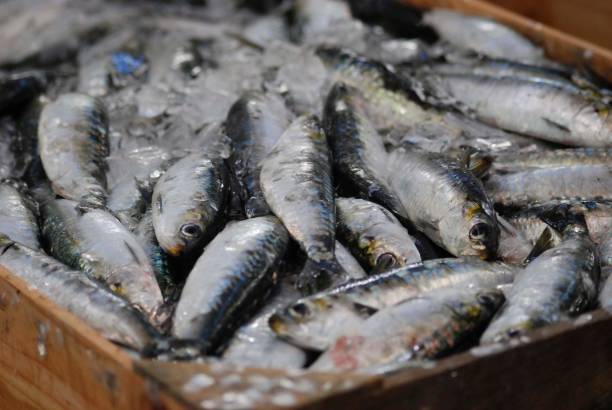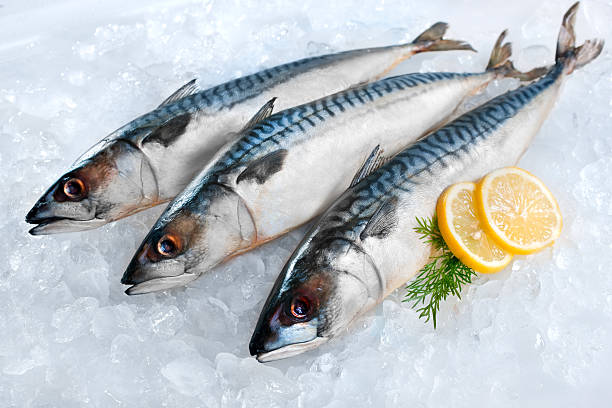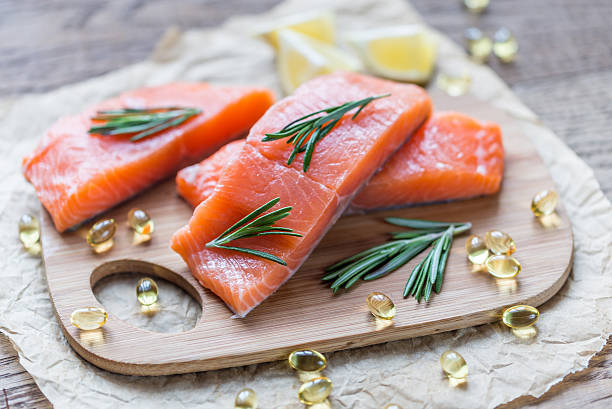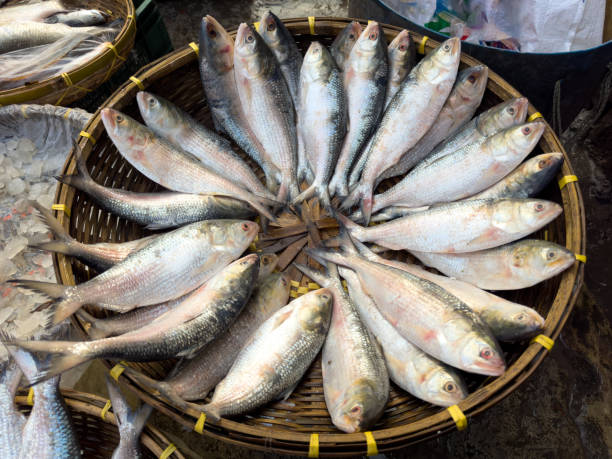Introduction: Seeing the Bigger Picture
Most people know fish is good for the heart. But did you know it’s also a superfood for your eyes? Eating it regularly gives your body powerful nutrients that your eyes can’t do without.
Your vision depends on tiny cells, blood vessels, and nerves working together like a team. These parts are delicate, and they need the right fuel to stay strong. Without proper nutrition, your eyes are more likely to face problems such as dryness, blurry vision, or even serious eye diseases as you get older.
Fish—especially fatty fish like salmon, sardines, and mackerel—is packed with omega-3 fatty acids, vitamin D, and protein. These nutrients keep your retina healthy, lower inflammation, and support clear vision. Studies even suggest that people who eat more fish have a lower risk of age-related eye problems.
In this guide, you’ll discover why it is good for your vision, which types of fish give the best benefits, and how much you should eat to keep your eyesight sharp for years to come.
The Science Behind Fish and Eye Health
Omega-3 Fatty Acids: Food for Your Eyes
Omega-3 fatty acids are healthy fats found in fish. They are essential because your body cannot make them on its own—you need to get them from food. These healthy fats play a big role in keeping your eyes working at their best. In fact, omega-3s do three important jobs for your vision:
- Keep your retina strong – The retina is like the camera film of your eye. It captures light and sends images to your brain. DHA, a special type of omega-3, makes up a large part of the retina. Without enough DHA, your retina may not work as well, which can affect how clearly you see.
- Reduce inflammation – Inflammation is like tiny “fires” in your body that can damage tissues over time. In your eyes, too much inflammation can harm blood vessels and nerves. Omega-3s calm this process and protect your vision from long-term damage.
- Support tear production – Tears keep your eyes moist, clear, and comfortable. If your eyes feel dry, scratchy, or tired, it could mean you need more omega-3s. These healthy fats help your body make better-quality tears, which ease irritation.
According to the American Academy of Ophthalmology, omega-3s may lower the risk of age-related macular degeneration (AMD), one of the leading causes of vision loss, and can also ease the discomfort of dry eye disease. This makes eating fish not just a smart choice for your overall health but a simple way to protect your eyesight as well.s may lower the risk of age-related macular degeneration (AMD) and dry eye disease.
Vitamin D and Eye Protection
Many fish, such as salmon and tuna, are rich in vitamin D, a nutrient that does more than just support your bones. Vitamin D also plays an important role in keeping your eyes healthy. It helps reduce inflammation, which is a major factor in eye problems like age-related macular degeneration (AMD). By calming inflammation, vitamin D protects delicate eye tissues and supports better vision as you age.
Research published in the Journal of Clinical Nutrition shows that people with higher vitamin D levels tend to have healthier eyes and stronger vision, especially in older adults who face a higher risk of AMD. Low levels of vitamin D, on the other hand, have been linked to poor eye health and faster vision decline.
Adding it like salmon, tuna, or even mackerel to your diet a few times a week can give you a steady source of vitamin D. This is especially helpful if you don’t get much sunlight, since your body makes vitamin D naturally from sun exposure. With it on your plate, you’re not only fueling your body—you’re also giving your eyes the protection they need to stay sharp.
Protein and Eye Tissue Repair
It is also a great source of high-quality protein, which your body needs every single day. Protein is made up of amino acids, the building blocks that repair and maintain tissues. This includes the delicate tissues in your eyes, such as the cornea, retina, and even the tiny muscles that help you focus.
As your eyes age, they experience natural wear and tear. Long hours in front of computers, phones, or TVs can also strain your eye muscles and cause tiny amounts of damage over time. Getting enough protein from fish helps your body repair these tissues, keeping your vision clear and your eyes strong.
Unlike many other protein sources, ith provides protein without a lot of unhealthy saturated fat. That makes it a smarter choice for both your overall health and your eye health. By choosing fish rich in both protein and omega-3s, like salmon or trout, you give your eyes the double benefit of repair and protection.

Specific Eye Benefits of Eating Fish
1. Helps Prevent Age-Related Macular Degeneration (AMD)
Age-related macular degeneration (AMD) is the leading cause of vision loss in older adults, and it affects the central part of your vision. This makes everyday tasks like reading, driving, and recognizing faces much harder. While there is no complete cure for AMD, lifestyle choices—especially diet—play a big role in prevention.
Studies show that people who eat fish at least two times per week have a much lower risk of developing AMD compared to those who rarely eat it. The key is the omega-3 fatty acids found in fatty fish like salmon, sardines, and mackerel. Omega-3s protect the retina by reducing the growth of abnormal blood vessels, which are one of the main causes of vision loss in AMD.
By adding more to your weekly meals, you can strengthen your retina, slow down damage from aging, and keep your central vision clearer for longer. This simple change in your diet could help protect your eyesight well into your later years.
2. Reduces Dry Eye Symptoms
Do your eyes feel gritty, tired, or watery? That could be a sign of dry eye syndrome, a common condition that happens when your eyes don’t make enough tears or when the tears they produce are low in quality. Dry eyes can cause discomfort, blurry vision, and make it harder to focus, especially if you spend long hours in front of a screen or in air-conditioned rooms.
Eating more fatty fish like salmon, sardines, or tuna can help. The omega-3 fatty acids in these improve the quality of your tears, making them more effective at keeping your eyes moist and protected. Good-quality tears do more than stop irritation—they also wash away dust, protect against infection, and keep your vision clear.
By adding it to your diet just a couple of times a week, you give your body the tools it needs to fight dry eye symptoms naturally, without relying only on artificial tears or eye drops. Over time, this simple habit can make your eyes feel more comfortable and refreshed.
3. Protects Against Glaucoma
Glaucoma is a serious eye condition that damages the optic nerve, the part of your eye that sends visual signals to your brain. Over time, this damage can lead to vision loss or even blindness if it’s not managed. One of the main causes of glaucoma is high eye pressure, which puts stress on the optic nerve and weakens it.
Eating fish rich in omega-3 fatty acids may help lower this risk. Omega-3s improve blood flow to the eyes, which keeps the optic nerve healthier and better supplied with oxygen and nutrients. They may also help reduce inflammation inside the eye, another factor linked to glaucoma.
While omega-3s are not a cure, adding fatty fish like salmon, mackerel, or sardines to your diet can be a simple way to support eye pressure control and keep your optic nerve strong. Along with regular eye checkups, eating it more can be an important step in protecting yourself against glaucoma.
4. Supports Vision Development in Children
For kids, DHA from fish is vital for both brain and eye development. DHA is a type of omega-3 fatty acid that helps build the retina, the part of the eye that processes light, and also supports the growth of the brain. Children who get enough DHA during their early years may enjoy clearer vision, sharper focus, and stronger learning skills.
Pregnant women who eat safe, low-mercury fish such as salmon, sardines, or trout can give their babies an extra boost for healthy eyesight even before birth. Studies suggest that babies whose mothers ate during pregnancy had better visual and cognitive development compared to those whose mothers did not.
For young children, eating fish a few times a week can continue to support eye growth, prevent early vision problems, and encourage lifelong eye health. Choosing the right fish ensures they get all the benefits of omega-3s without the risks linked to high-mercury seafood.

Best Types of Fish for Eye Health
Not all fish are equal when it comes to eye nutrition. Some types of fish provide much higher levels of omega-3s, vitamins, and minerals that are especially good for your vision. Choosing the right fish can make a big difference in protecting your eyes from problems like dry eye syndrome and age-related macular degeneration (AMD). Here are the top choices for healthier eyesight:
- Salmon – High in DHA and vitamin D, salmon is one of the best fish for overall eye health. DHA keeps your retina strong, while vitamin D helps reduce inflammation.
- Sardines – Packed with omega-3s and calcium, sardines are small but powerful. They are also low in mercury, making them a safe choice for both adults and kids.
- Mackerel – Rich in healthy fats and vitamin B12, mackerel supports blood flow to the eyes and provides energy for the cells that protect your vision.
- Tuna – Easy to find and full of DHA, tuna is a simple way to add omega-3s to your diet. Choose light canned tuna or fresh tuna steaks for the best balance of nutrients.
- Anchovies – Tiny but nutrient-dense, anchovies are loaded with omega-3s and can be added to salads, pizzas, or pasta dishes for an extra eye-healthy boost.
- Trout – A freshwater option with lots of omega-3s, trout is also a good source of vitamin D, making it a smart choice if you don’t eat much seafood.
Tip: Choose wild-caught fish when possible, as they often contain higher levels of omega-3s and fewer contaminants compared to farmed fish. This ensures you get the most vision-protecting nutrients in every serving.d-caught fish when possible, as they often contain higher levels of omega-3s.
How Much Fish Should You Eat?
Experts recommend eating at least two servings of fatty fish per week to support both eye health and overall wellness. One serving is about 3–4 ounces, or roughly the size of your palm. Regularly including fish like salmon, tuna, or sardines in your meals gives your body a steady supply of omega-3 fatty acids, vitamin D, and protein—all key nutrients for strong vision.
But what if you don’t eat fish? You can still get omega-3s for eye health from several plant-based sources. These options are especially helpful for vegetarians and vegans:
- Flaxseeds – Rich in alpha-linolenic acid (ALA), a type of omega-3 that supports heart and eye health. Ground flaxseeds are easier to digest than whole seeds.
- Chia seeds – Packed with ALA, fiber, and antioxidants, chia seeds can be added to smoothies, yogurt, or oatmeal for a nutrient boost.
- Walnuts – A simple snack that delivers healthy fats and plant-based omega-3s to help protect your eyes.
- Algae-based supplements – One of the best vegetarian alternatives, algae oil provides DHA, the same omega-3 found in fish, and directly supports retinal health.
While plant-based omega-3s are helpful, they may not be as efficient as fish-based DHA. That’s why experts suggest combining plant sources with algae-based DHA supplements if you don’t eat fish at all. This ensures your eyes still get the protection they need.
Smart Tips for Adding More Fish to Your Diet
Eating more fish doesn’t have to be boring. Here are some easy, tasty ideas:
- Grill salmon with lemon and herbs for dinner.
- Add canned tuna or sardines to salads.
- Make fish tacos with avocado and fresh salsa.
- Swap red meat for trout or mackerel once a week.
- Try sushi rolls with salmon or tuna.
Choosing Fish Safely
While fish is healthy, some types contain mercury, which can harm your nervous system if eaten too often. To stay safe:
- Limit high-mercury fish like shark, swordfish, king mackerel, and tilefish.
- Choose low-mercury fish like salmon, sardines, anchovies, and trout.
- Pregnant women and young children should be extra cautious and stick to safe, low-mercury fish.
For more details, check the FDA’s fish and mercury guidelines.

Fish vs. Fish Oil Supplements: Which Is Better?
If you don’t like the taste of fish, you might wonder if a fish oil supplement works the same way. Supplements can provide a good dose of omega-3 fatty acids, but they lack the extra vitamins, minerals, and high-quality protein that come from eating whole fish. For example, when you eat salmon or sardines, you’re not only getting DHA and EPA (two powerful omega-3s), but also vitamin D, vitamin B12, selenium, and other nutrients that directly support eye health.
Whole fish gives you the full package of nutrition your eyes and body need to stay strong. Fish oil supplements can be helpful as a backup, especially if you rarely eat fish, but they should not completely replace real food. Think of them as a way to “fill the gaps” in your diet rather than the main source of eye-protecting nutrients.
If you decide to use supplements, choose a high-quality brand that lists both EPA and DHA on the label, since these are the forms of omega-3s most beneficial for your retina and overall vision. Still, whenever possible, aim to get your omega-3s from whole, fatty fish at least twice a week for the greatest benefits.
FAQs About Fish and Eye Health
Can eating fish improve blurry vision?
Fish can’t correct blurry vision caused by glasses or contacts, but it helps protect your eyes from future problems.
How soon will I notice results?
You may feel less eye dryness within a few weeks, but long-term benefits, like protection from AMD, take years of healthy eating.
What if I’m vegetarian or vegan?
You can still protect your eyes with plant-based omega-3 sources like flaxseed oil or algae-based DHA supplements.
Conclusion: A Simple Step Toward Sharper Vision
Your eyes are precious, and protecting them starts with what you eat every day. Fish is one of the best foods for eye health because it provides omega-3 fatty acids, vitamin D, and protein—all of which work together to keep your eyes strong and your vision clear. These nutrients protect the retina, reduce inflammation, and even support tear production for more comfortable eyes. From lowering the risk of age-related macular degeneration (AMD) to easing the irritation of dry eye syndrome, the benefits of eating fish are clear and well-researched.
If you want healthier eyesight, start by adding fatty fish like salmon, tuna, mackerel, or sardines to your weekly meals. Just two servings a week can give your body the nutrients it needs to protect your vision for years to come. Small changes in your diet today can make a big difference in keeping your eyesight sharp tomorrow.
👉 Your turn: What’s your favorite way to enjoy fish? Grilled, baked, or in sushi? Share your thoughts in the comments—I’d love to hear your go-to fish dish!

